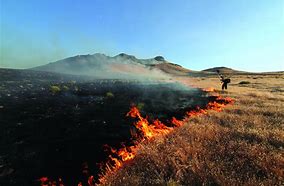To address these problems, the International Fire Safety Consortium is focusing on research, education, and partnerships in the following areas:
Fire Safety in the Developing World
This Consortium seeks to establish a global network on fire safety and resilient affordable housing to address fire safety issues for disadvantaged communities in developing nations around the world. The Consortium will establish a platform for government agencies, research organizations, and the private sector to share and disseminate knowledge, build capacity, and develop innovative solutions to help disadvantaged communities in dealing with the challenges associated with safety, sustainability and resilience.
In partnership with companies, government agencies, and NGOs around the world, the Consortium will facilitate a coordinated approach for improving the housing and living standards of these communities towards a safer, more resilient, low cost and sustainable future based on capacity building, knowledge sharing and establishment of living labs and demonstration projects. These activities will lead to low cost housing techniques and solutions that can provide a more time efficient solution suitable for different parts of the world. The outcomes and knowledge gained from the research activities of our network will be applied globally, specifically in developing countries.

Social Inequality and Fire Safety
To address the issue of social inequality in fire safety, the Consortium seeks to trial pragmatic solutions across a broad range of contexts in different jurisdictions. The Consortium has three main objectives for this focus area:
to assess, collate and analyse the data available to better understand the relationship between social inequality and fire risks both across and within a representative range of jurisdictions;
to develop initiatives working with the fire services, local and national government and other relevant agencies within these jurisdictions to increase the quantity and quality of relevant data; and
to carry out pilot studies, based on comparative analysis of existing and new data, to trial pragmatic approaches for reducing fire risk inequality.
The first step for this project will involve a comprehensive survey of the available data across an appropriate range of jurisdictions. Comparative analysis will provide an initial indication of correlations of key factors with fire outcomes and help identify where improvements in data collection are needed.
The second phase of this project will build on the initial analysis of available statistics and other data sources by developing better means of recording key fire safety information. To address the issue of fire risk inequality, we need data of greater quality covering a wider range of jurisdictions.
The third phase of the project will set out practical measures to address fire risk inequality. Even when countries do have formal building regulations that could reduce fire risks, the application of these is often undermined by failures in governance (either because of a lack of competence or due to corruption) and because many Low and/or Middle Income Countries (LMICs) have high levels of informal settlements. There is scope for improving fire outcomes in (LMICs) with potential mechanisms, including: the enforcement of building regulations; the construction of suitable infrastructure; the organisation of effective fire services; and public education campaigns.
Community Resilience
The Consortium seeks to develop tools to promote the adaptation of communities to the potential risks of fire as well as the transformation of communities following exposure to fires. Promoting a shared community ownership for fire safety is key to achieving this goal in addition to any engineering solutions that may contribute to reducing the overall risks. Low cost and affordable fire safe housing is vital to long term community adaptation to the risk of fire spread in informal settlements.
Such an objective could be achieved through understanding the mechanism for fire spread through informal settlements, the response of the community to this, and the cultural factors that influence the construction type and the human response. This understanding could be applied to developing technical solutions to slow or inhibit fire growth and spread; to reduce the frequency of fire; and to better inform the populations as to their own role in contributing to fire safety.
Wildfires and Wildland-Urban Interface
Increasing our understanding of wildland fires and their influence on the Wildland-Urban Interface (WUI) is a complex task, particularly due to large variability in scale. Additionally, structures in the WUI may be ignited directly from nearby wildland vegetation and other buildings, but also by firebrands and embers (burning material that can be carried aloft for up to 35 km ([xii]). Effective management of the WUI will require diverse fields of expertise and multi-agency collaboration.
Combining the efforts of fire scientists, ecologists, engineers, designers, and sociologists collaboratively on the problem could have an enormous impact on reducing their detrimental effects in the future.
This work could be realised through a series of interconnected tasks: understanding dynamic fire behaviour in wildfires and their transition to WUI; investigating emissions and their health impacts both short and long term; assessing risk of wildfires on critical infrastructures and communities; developing new standards and regulations; and evaluating the social aspect of wildfire problem, looking at communities preparedness and their response. These activities are likely to save human lives, reduce damage and economical losses from wildfires and WUI fires. Obtained results will be valuable for both developing and developed countries.
The Consortium will also provide a benchmark for professional standards in the fire safety field, delivering modern and innovative education for a next generation of designers and decision makers. The Consortium will engage in research and education to support and advance a globally recognised fire safety profession.
[xi] Walls Richard, S., Appraisal of fire safety interventions and strategies for informal settlements in South Africa. Disaster Prevention and Management: An International Journal, 2019. 28(3): p. 343-358.
[xii] Cruz, MG, Sullivan, AL, Gould, JS, Sims, NC, Bannister, AJ, Hollis, JJ, Hurley, RJ (2012) Anatomy of a catastrophic wildfire: the Black Saturday Kilmore East fire in Victoria, Australia. Forest Ecology and Management
